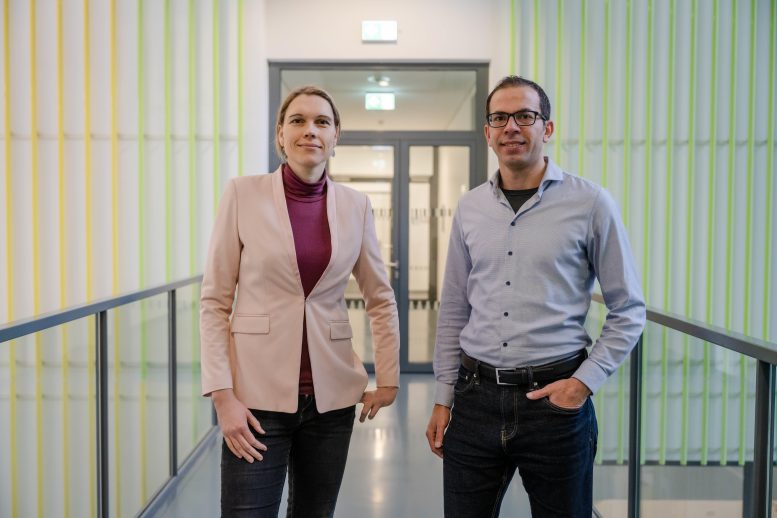
Electrocatalysts are substances that accelerate chemical reactions in electrochemical cells. They are crucial components in many energy conversion and storage technologies, such as fuel cells, batteries, and electrolyzers, as they improve the efficiency and stability of these systems.
Making electrolysis competitive.
In the fight against climate change, the reduction of CO2 emissions is crucial. Currently, grey hydrogen, produced from oil and natural gas, is widely used, but efforts are underway to replace it with green hydrogen, generated from renewable sources. Green hydrogen is produced through electrolysis, a process where electricity splits water into hydrogen and oxygen. Despite its potential, several challenges must be overcome to make electrolysis a viable option.
At present, the water-splitting process is only efficient to a limited degree, and there are not enough powerful, durable, and cost-effective catalysts for it.
“Currently, the most active electrocatalysts are based on the rare and expensive precious metals iridium, ruthenium, and platinum,” lists Kristina Tschulik. “As researchers, our job is therefore to develop new, highly active electrocatalysts that are free of precious metals.”
Her research group studies catalysts in the form of base metal oxide nanoparticles that are a million times smaller than a human hair. Manufactured on an industrial scale, they vary in shape, size, and chemical composition.

Kristina Tschulik (left) and Hatem Amin are investigating nanoparticles as catalysts for green hydrogen. Credit: © RUB, Marquard
“We use measurements to examine so-called catalyst inks, in which billions of particles are mixed with binders and additives,” outlines Kristina Tschulik. This method only allows researchers to measure an average performance, but not the activity of individual particles – which is what really matters.
“If we knew which particle shape or crystal facet – the surfaces that point outwards – is most active, we could specifically produce particles with that exact shape,” says Dr. Hatem Amin, a postdoctoral researcher in analytical chemistry at Ruhr University Bochum.
Winner of the nanoparticle race
The research group has developed a method to analyze individual particles directly in solution. This enables them to compare the activity of different nanomaterials with each other in order to understand the influence of particle properties such as their shape and composition on water splitting. “Our results indicate that cobalt oxide particles in the form of individual cubes are more active than spheres, as the latter always have several other, less active facets.”
Theory confirms experiment
The Bochum group’s experimental findings were confirmed by its cooperation partners headed by Professor Rossitza Pentcheva from the University of Duisburg-Essen as part of the Collaborative Research Centre/Transregio 247. The latter’s theoretical analyses indicate a change in the active catalyst regions, namely from cobalt atoms that are surrounded by oxygen atoms forming an octahedron to cobalt atoms that are surrounded by a tetrahedron.
“Our insights into the correlation between particle shape and activity lay the foundation for the knowledge-based design of viable catalyst materials and, consequently, for the transformation of our fossil energy and chemical industries towards a circular economy based on renewable energy sources and highly active, long-lasting catalysts,” concludes Kristina Tschulik.
Reference: “Facet-Dependent Intrinsic Activity of Single Co3O4 Nanoparticles for Oxygen Evolution Reaction (Adv. Funct. Mater. 1/2023)” by Zhibin Liu, Hatem M. A. Amin, Yuman Peng, Manuel Corva, Rossitza Pentcheva and Kristina Tschulik, 3 January 2023, Advanced Functional Materials.
DOI: 10.1002/adfm.202370006









Be the first to comment on "The Best Catalyst Particles: Cubes Outperform Spheres"